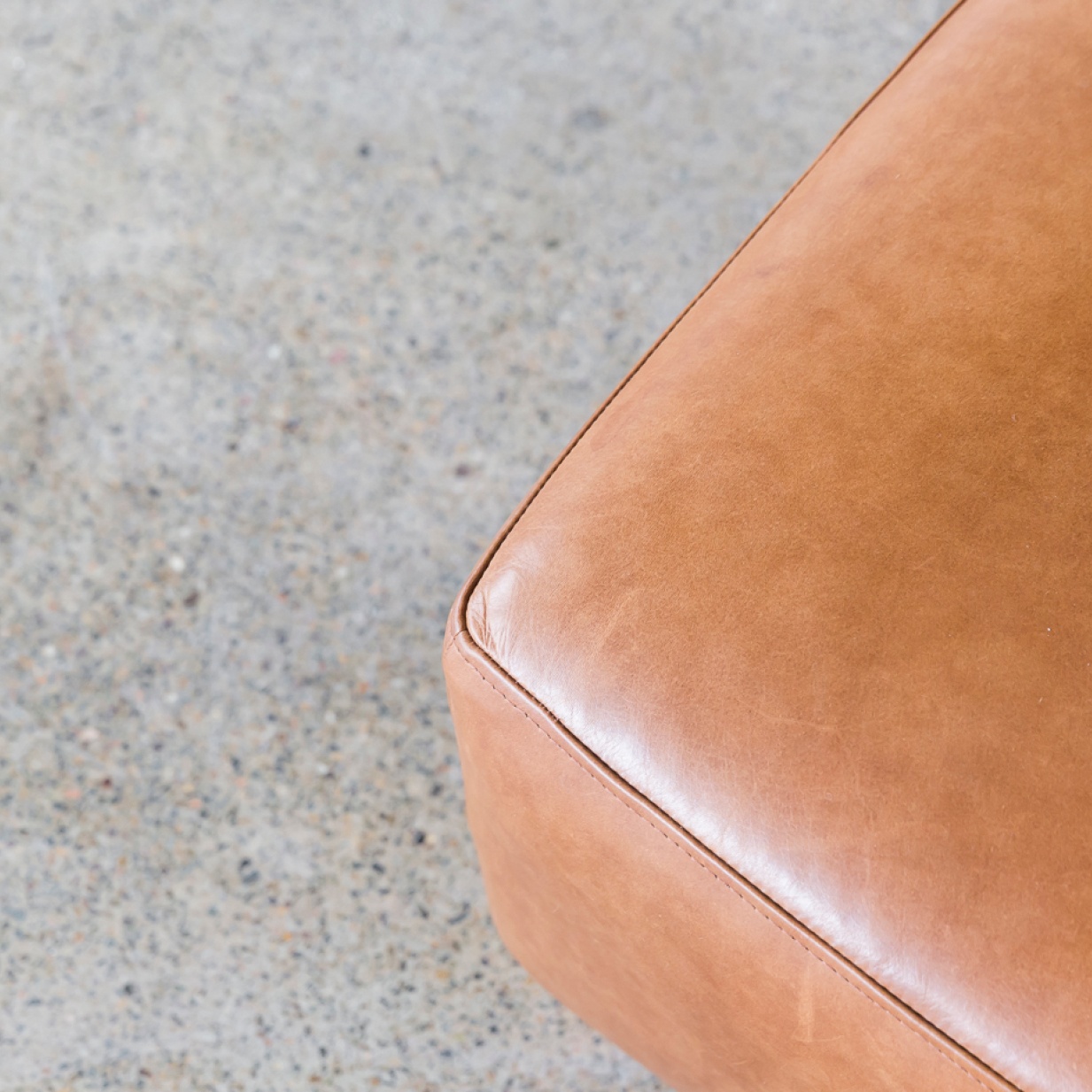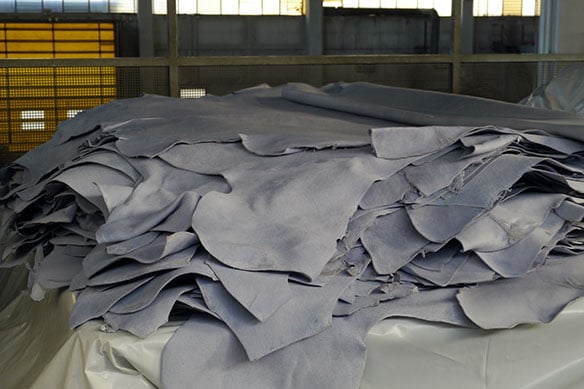Leather is a natural material that just screams luxury, comfort, and immediately adds texture to any space. The most common leathers used today as an upholstery material for commercial furniture projects are full grain and top grain leathers.
But what kind of leather should you spec on your next project, and what’s the difference between full grain, top grain versions? And what about suede? We’ve got some answers for you.
If budget allows, full grain, the highest grade of leather on the market, is always the way to go, especially for commercial furniture projects. The term “full grain” simply means that the hair was removed from the hide and and then went immediately into the tanning process (it wasn’t sanded or buffed free of imperfections). Because the hide wasn’t buffed or sanded, it retains the entire thickness of the grain. These leathers have a greater tensile strength, making them less susceptible to “puddling” than other leather versions.
A high quality, full grain leather will most likely have visible scars, potentially from the animal rubbing against fences, or bug bites, it may even have fat wrinkles and growth lines. These imperfections will cause subtle color variations in the finished product. Like rings in a cross section of a tree trunk, full grain leathers will feature imperfections that give us insight into the life and age of the animal it came from. While some may prefer a more uniform look and feel, there is something so beautiful about these natural markings.
 Close up of leather upholstery
Close up of leather upholstery
Full Grain Leather
Full grain leathers have just a small layer of finish applied to the surface, allowing the hide to absorb body oils overtime, known as patina, bringing out an even richer depth of color. Since the topical finish is so thin, the product remains extremely breathable, and actually helps regulate body temperature when in use.
 Pile of Leather Hides at Spinneybeck’s Factory
Pile of Leather Hides at Spinneybeck’s Factory
Top Grain Leather
Up next, we have top grain leathers. Top grain leathers are the second highest-quality leather on the list and are most commonly used to produce high-end handbags and upholstery. Top grain leathers have had the upper portion of the dermis removed therefore losing the strongest, tightest, and most dense part of the hide. While still a high performance product, on commercial furniture, it may be more susceptible to “puddling” overtime than a full grain leather. After the upper layer is removed, the surface is then sanded, buffed, and a generous finish is applied, giving it a “smooth” feel. While this finish inhibits breath-ability, it prevents stains that would otherwise sink into full-grain leather, leaving a potentially permanent mark. After the surface is sanded and appears uniform, it is typically embossed with a natural grain skin texture or pebble grain texture. Top grain leathers can often times feel artificial since fillers are used to patch imperfections, resulting in an overall texture and color that is perfectly uniform. That being said, the final product is extremely durable and rich in color and finish.
Suede
Finally, there’s another popular leather variation out there called “suede.” Suede is pretty much the velvet of leather, but doesn’t perform as well in high-use spaces. Known for it’s soft, velvet-like texture, suede is made by sanding the bottom half of a hide after it has been split (aka the reticular side, if you’re fancy) to produce its signature texture, known as a naps. Naps are small protein fibers that give suede it’s fluffy, soft surface. Because suede is made from the reticular side of the hide, it is inherently less durable than a full grain or top grain variation. Another downfall of suede is that it gets dirty and absorbs liquids quickly. So, if your heart is set on a suede, use sparingly and look for waterproof variations like Tinge from Maharam.
This is just the tip of the iceberg when it comes to leather and leather-like solutions that are ideal for commercial furniture projects, heck, we didn’t even touch on vegan or bonded leathers. The truth is that a quality leather can last decades when cared for and is an easy way to add character and warmth to a space. If you want to learn more about our favorite fabrics and partners then check out our three favorite commercial velvet solutions or tips on how to make vinyls look sexy!

